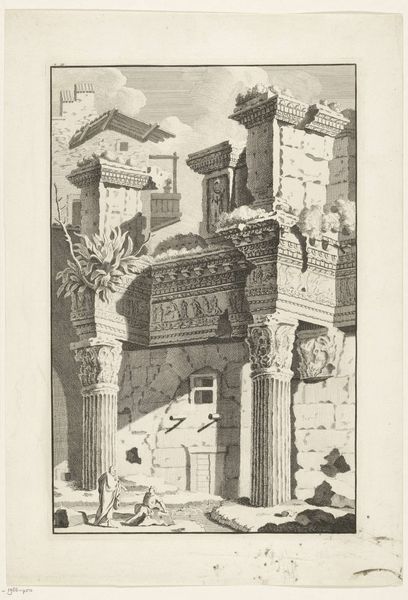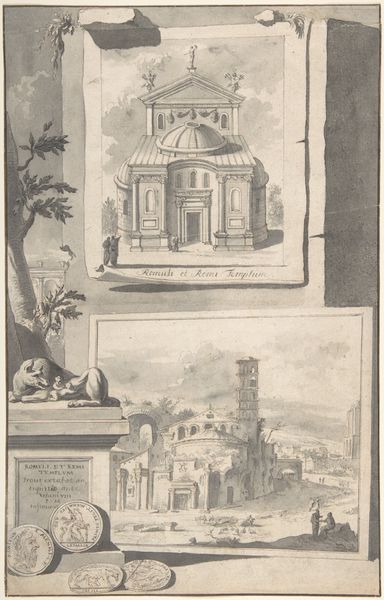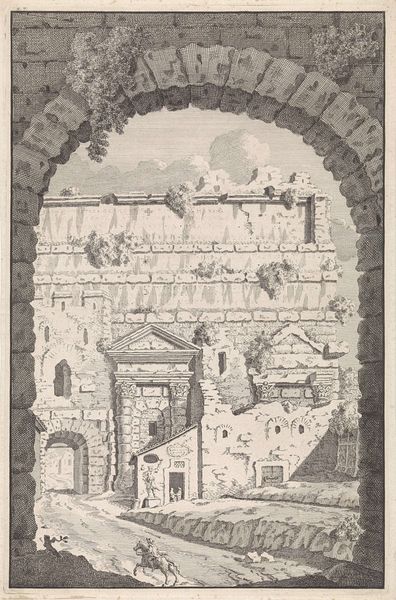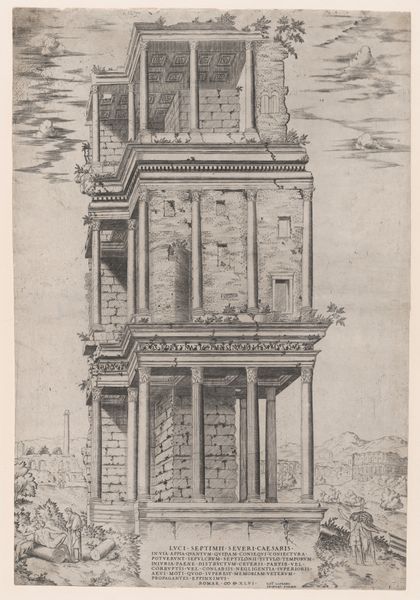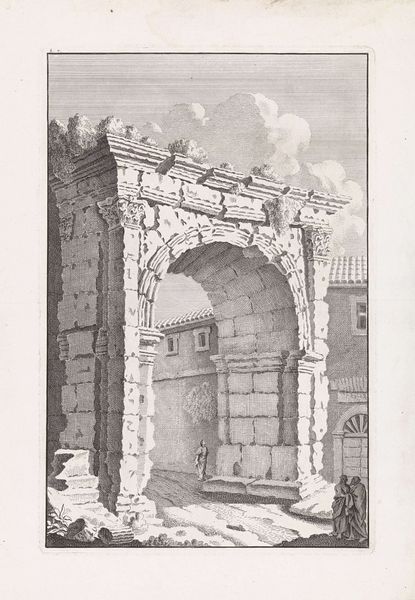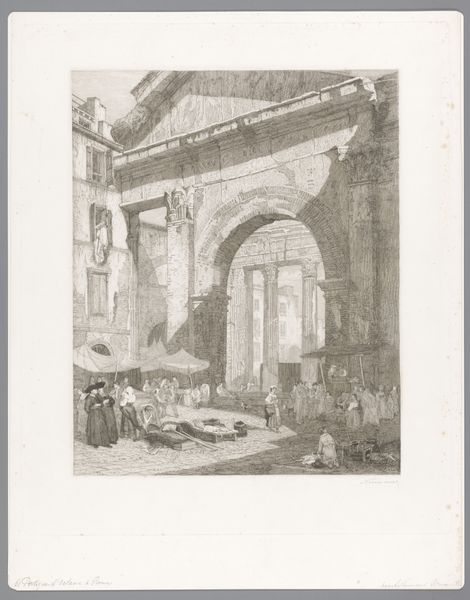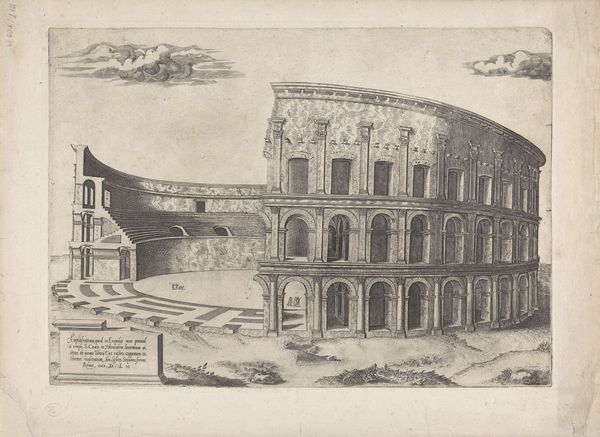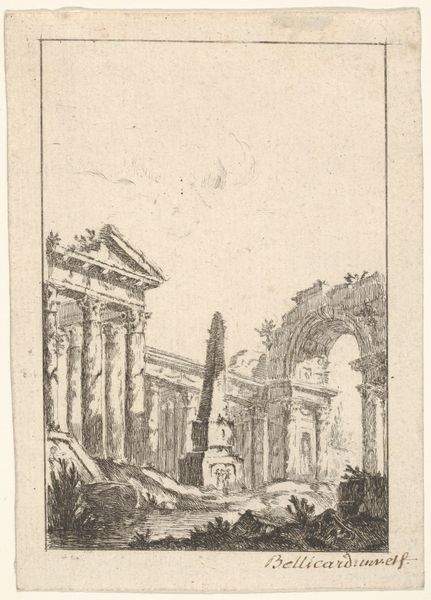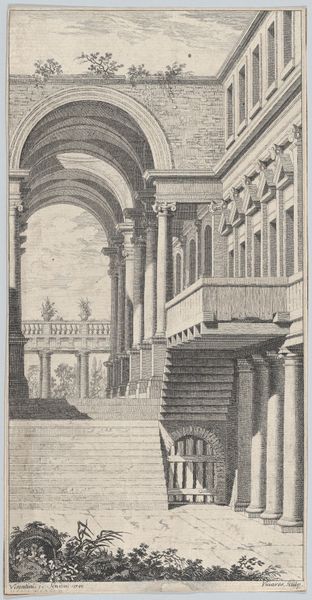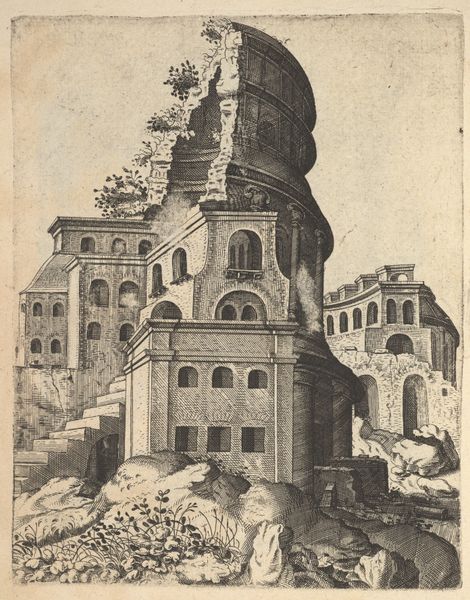
print, engraving, architecture
#
baroque
# print
#
old engraving style
#
line
#
cityscape
#
engraving
#
architecture
#
realism
Dimensions: height 400 mm, width 264 mm
Copyright: Rijks Museum: Open Domain
Curator: Oh, I’m drawn in. It has a beautiful, somber feel – that’s my initial reaction. A story etched in lines, as though each stroke holds a whisper of the past. Editor: Precisely! What you're responding to is captured in this engraving, titled "Ruïne van de Casa di Crescenzio (Casa dei Crescenzi) in Rome". Bonaventura van Overbeek created this piece around 1708. It stands as an example of the fascination with Roman ruins during the Baroque period. Curator: Ruin…a potent word! See how the building itself seems to sag with centuries? And the texture, rough and detailed; the stones worn away, history visibly crumbling, it feels incredibly human. I wonder what stories those walls could tell if they could speak? Editor: What speaks to me is the intersection of power and decay it represents. The Casa dei Crescenzi, once a symbol of familial authority, now reduced to a picturesque ruin. This decay represents how power structures are, indeed, impermanent. Curator: It's interesting that something so clearly marked by loss is so… aesthetically pleasing, right? Is that weird to say? It’s almost as if time, in its brutal way, becomes another kind of artist! Editor: The engraver's lines almost romanticize decay, lending it an air of nobility. This points to the complexities in viewing history, particularly architecture, where aesthetics can overshadow the social realities. We are forced to question what and who gets memorialized, and how. Curator: Good point. And to think this rendering is its own act of preservation. Each line a little act of rebellion against oblivion. I mean, who even remembers the Casa di Crescenzio without this rendering? We all crumble eventually, even buildings, no? Editor: Yes, but with each fall, the need arises for a new architecture of resistance, new strategies of power—be they in stone or ink—ready to rise from the foundation that our ruin provides. I find it to be a continuous challenge, not necessarily a source of sorrow. Curator: Absolutely. Maybe that’s why it has such a pull – we’re witnessing not just the end of something, but also an unspoken, and even unseen beginning. Thank you, this engraving suddenly resonates a lot more now! Editor: It’s vital that art invites a multilayered conversation, prompting both a response to its intrinsic appeal and consideration of the systems, historical circumstances, and lives involved in its conception. Let us allow it do its work.
Comments
No comments
Be the first to comment and join the conversation on the ultimate creative platform.
